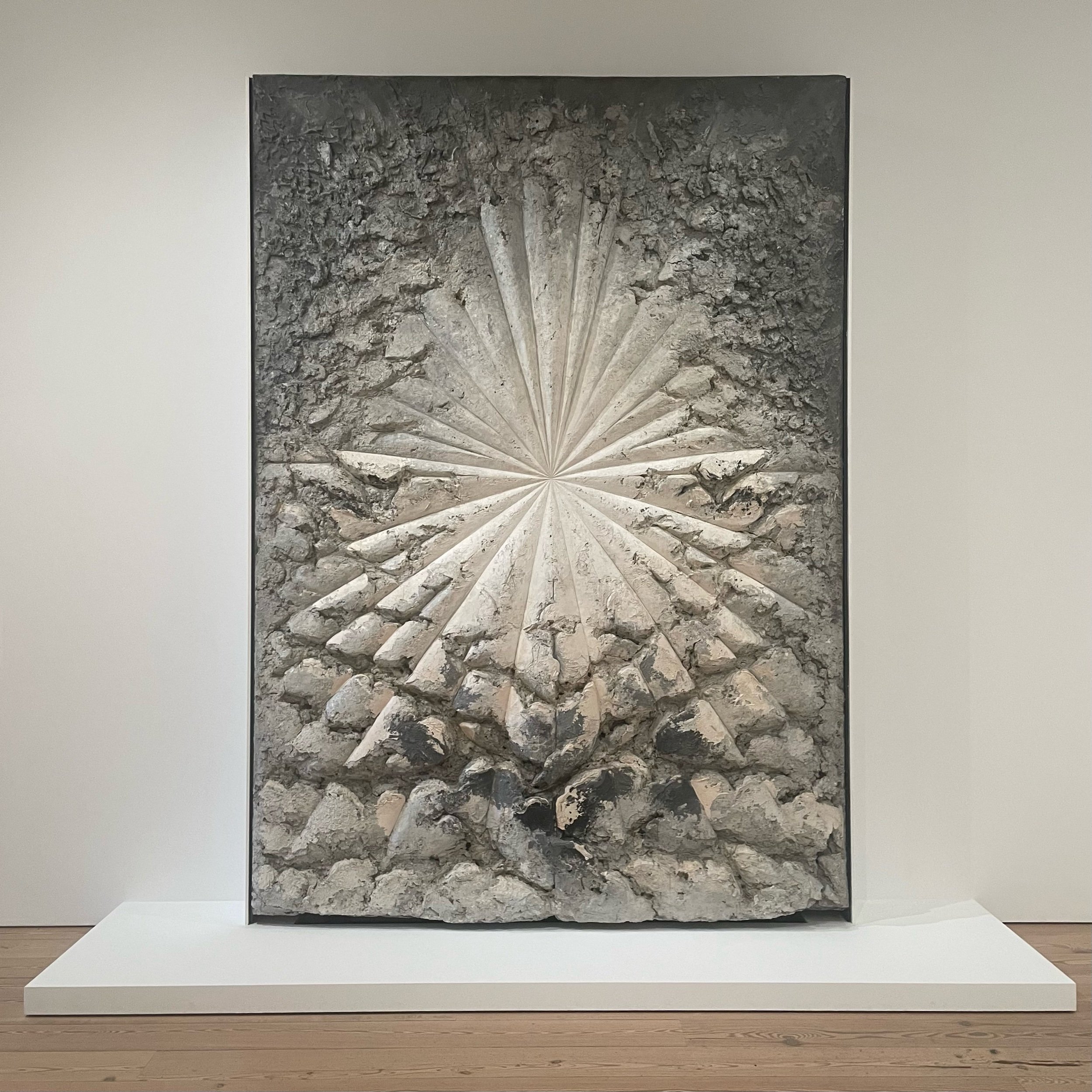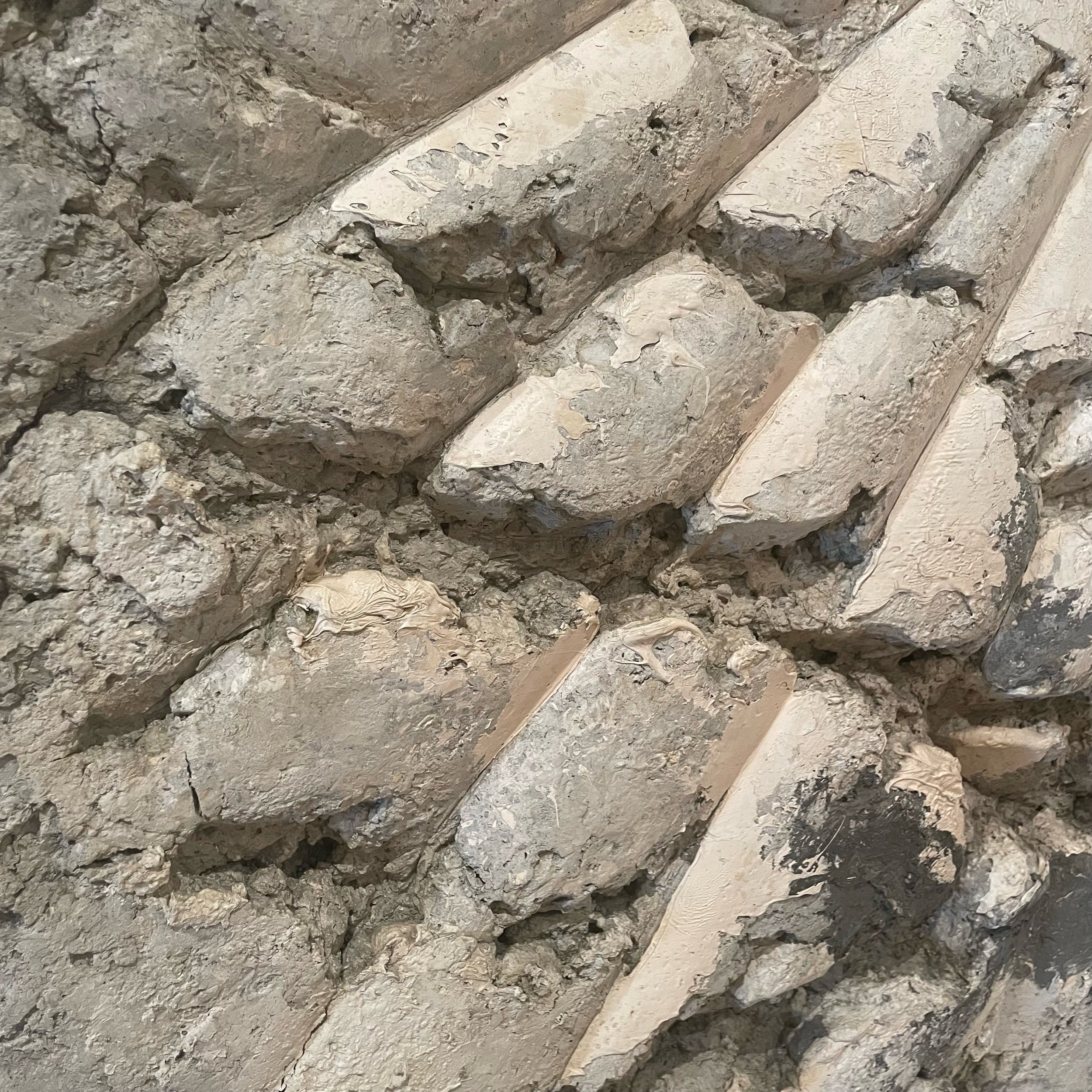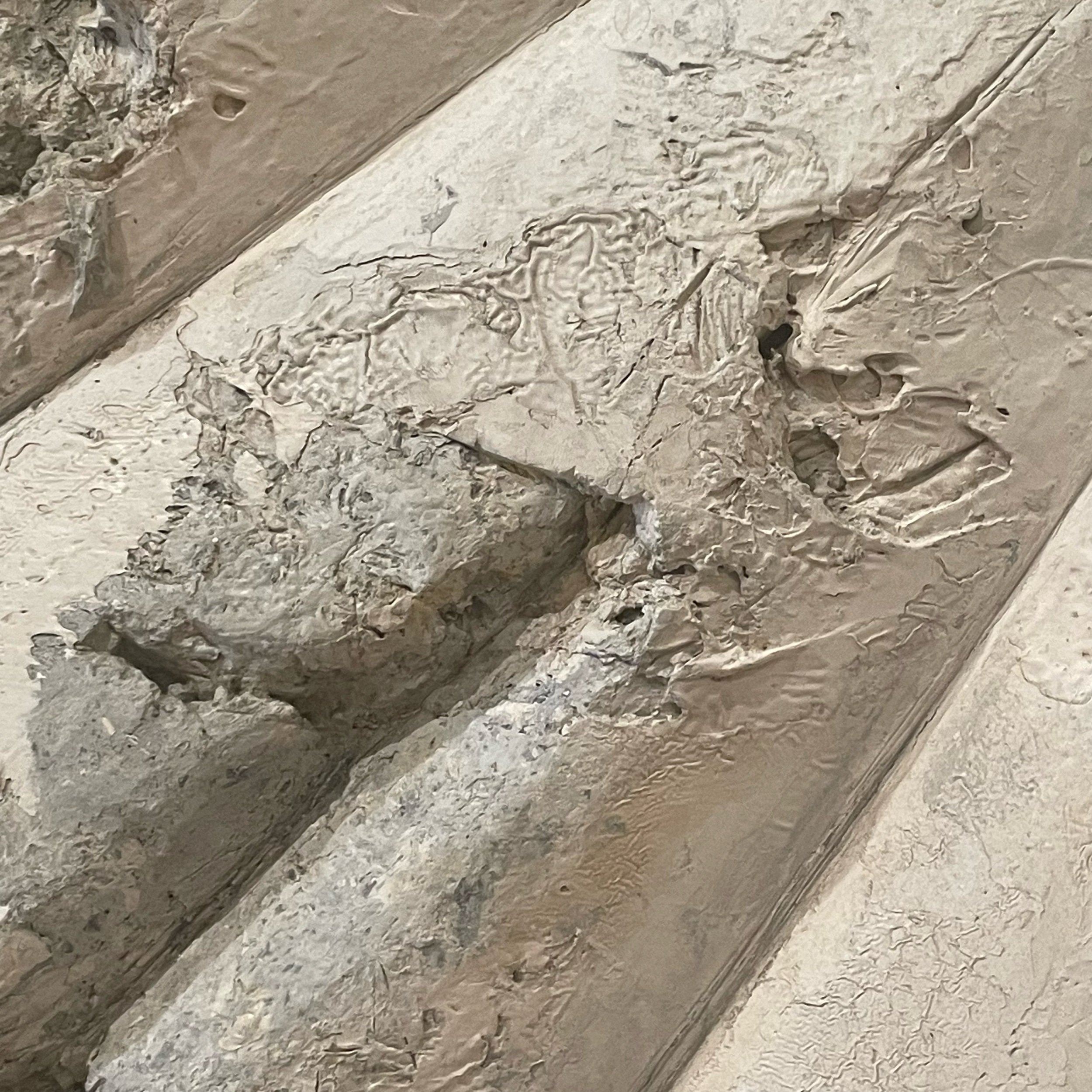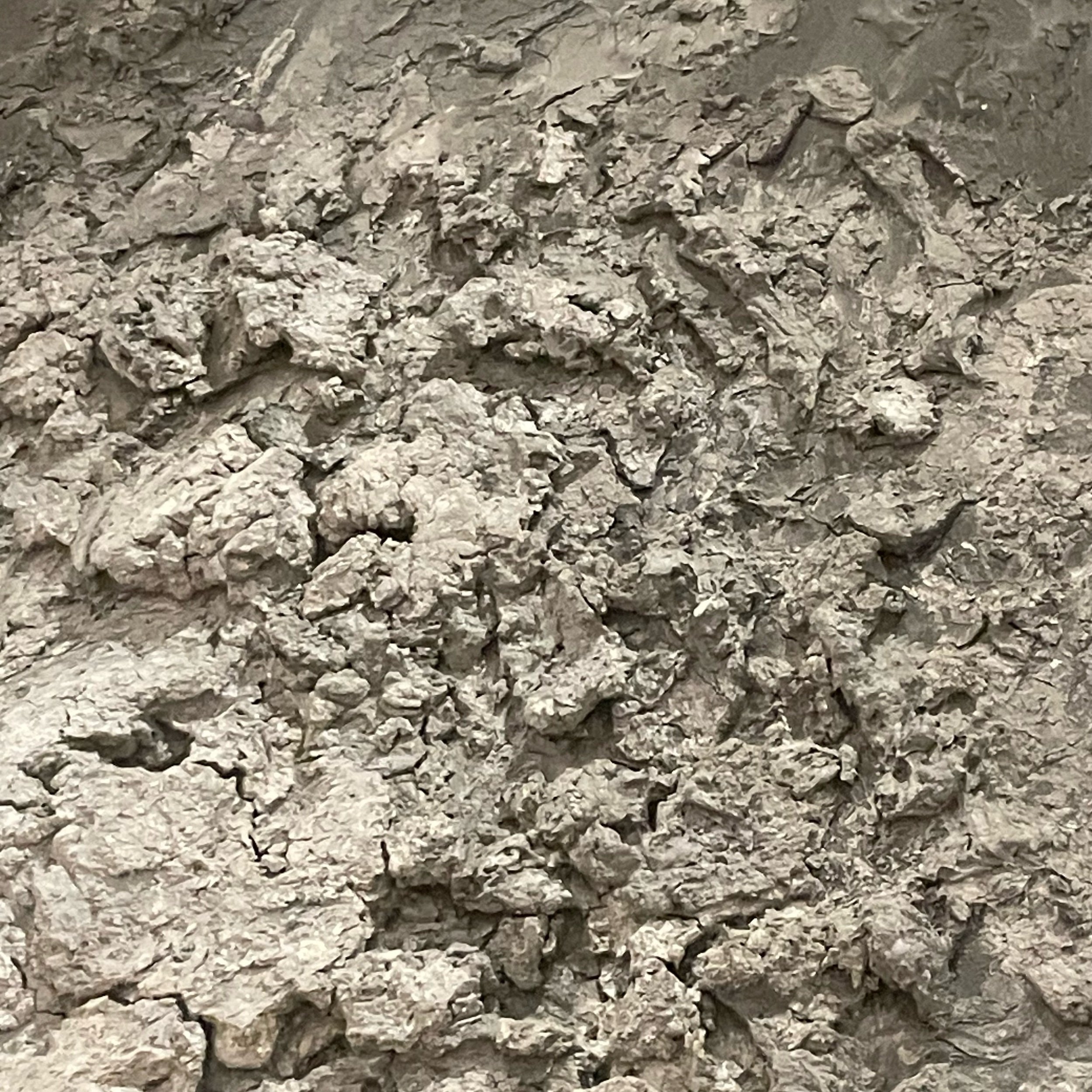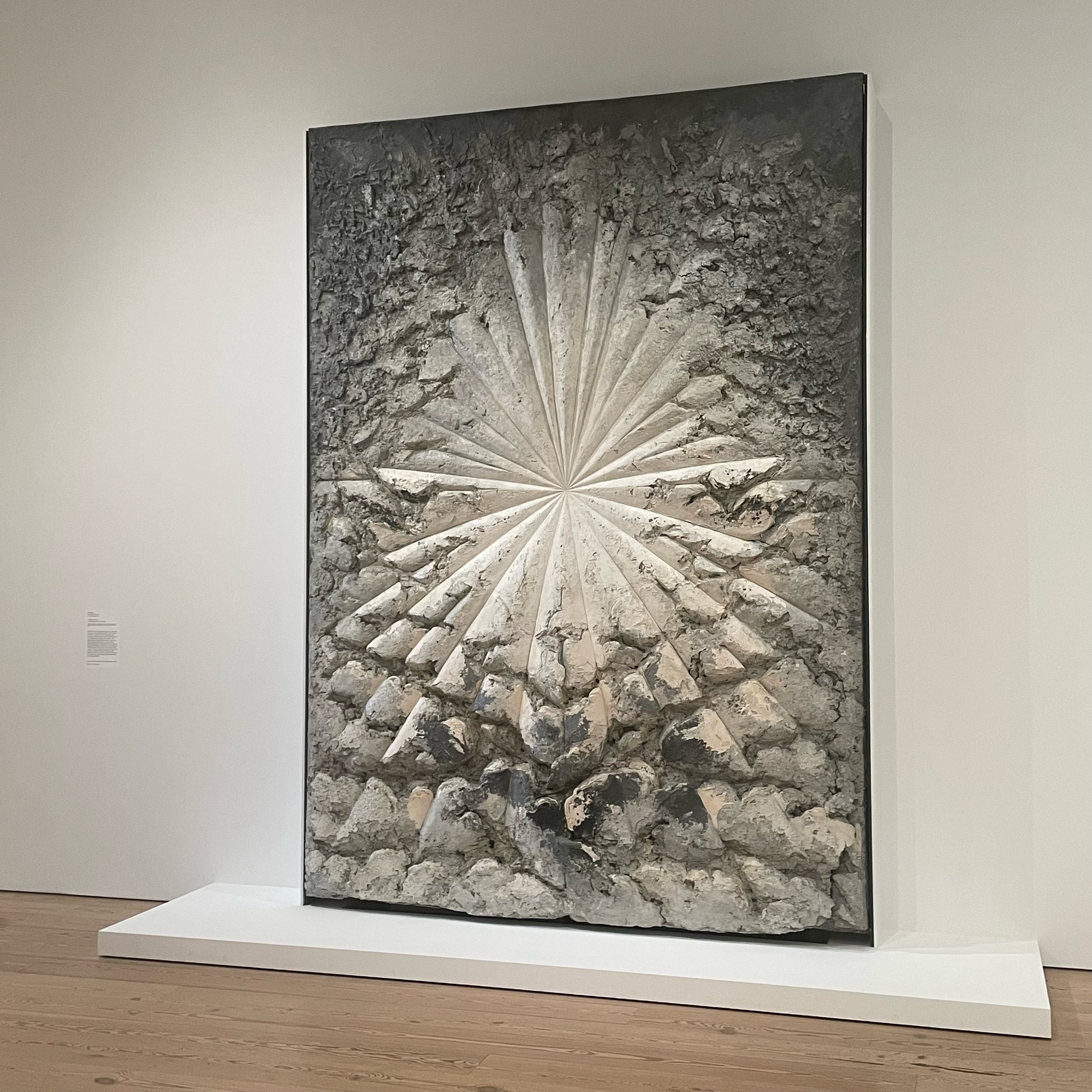The Rose (1958-66)
Jay DeFeo (1929-1989)
The Rose, 1958-66
oil with wood and mica on canvas
327.3 cm × 234.3 cm x 27.9 cm
The Whitney Museum of American Art, NYC
I was recently in New York City and unexpectedly bumped into an old friend that I didn’t realise was also in town. We first met a decade earlier on the West Coast, and even though I hadn’t seen them since, they made such an impression on me the first time around that seeing them again filled me with warmth and joy.
Of course, I’m referring to a work of art. Specifically, The Rose, by Jay DeFeo and my eleven years between viewings is only slightly longer than it took DeFeo to make it. It was almost exclusively her only focus for the eight years between 1958 - 1966. That’s a long time to dedicate to a single work of art, but a fraction of the time that it was later hidden away. We’ll get to that.
I first saw The Rose when the SFMOMA put on a Jay DeFeo retrospective in 2012. I’d never even heard of her, but on the day I went I probably spent more time in front of that one work than I spent in the entire rest of the museum. Oddly, I took no photos but I did buy the book. I didn’t really need to do either. It had such a powerful effect on me, it’s been stuck in my memory ever since.
Much of my love for this work stems from the immediate impression I got upon first seeing it, and the jawdrop that ensued after I read the facts on the wall text. From across the room it appeared to be concrete, possibly a brutalist starburst recovered from some long demolished estate. But in fact, it’s paint. Layers and layers of paint that’s been built up, scraped away, and repainted again… and again... and again over the course of the eight years that DeFeo worked on it. It’s so thoroughly sculptural, with undulating ridges and jaggy gaps that look like cracked plaster, that it’s debatable whether it should even be called a painting. It went through numerous changes to it’s composition as well as title. Deathrose and The White Rose were early names for the work that consumed her, took over her studio, and ended up weighing over 1,500 pounds (680 kg). It had to be removed with a forklift.
There are dozens of facts about The Rose but most don’t add much more to the story because they’re already evident in the work. It’s one of those rare pieces where the materiality speaks for itself. You know this thing must weigh a tonne. You know it wasn’t painted in a weekend. But you don’t know that it remained unseen, hidden behind a false wall in a boardroom for almost three decades.
Shortly after it was finished The Rose was exhibited but drew no sales or museum interest. Lacking both space and funds for storage, DeFeo agreed to let the San Francisco Art Institute hang the painting in one of their newly built conference rooms. It began to deteriorate in the conditions (you would too if you had to live in a corporate conference room!) and was coated with a protective layer before a false wall was built around it. It remained permanently hidden from view for over two decades, eventually fading from memory and living on only through rumours about a lost work hidden somewhere in the walls.
Today it sits in The Whitney, and I probably would have walked right past it had I not known what it was. I saw others do just that even though it’s an imposing piece, because it’s one of many “white” works in a medium sized room. When I first saw it at SFMOMA it was given pride of place and a room all it’s own. In the Whitney it’s given no particular prominence aside from the plinth on which it sits. That’s understandable in the context of a major museum that simply can’t spotlight every single work in their collection, but I still felt sad that it wasn’t drawing a larger crowd of admirers clustering around it.
I know most people don’t “get” abstract art, but with a work that large wouldn’t you at least want to know what it’s made of? And once you read that it’s made just from paint? Surely that would cause you to circle round and stay for a closer look, right? At least that’s what happened with me, on both occasions and coasts when I’ve been fortunate enough to see The Rose in person.
That’s why I like it.
Every work of art deserves a second chance.
Additional reading:
Previously, on Why I Like It:
Oct — Acre of Green (2007), Nathan Slate Joseph
Sep — Fire! Fire! (1963-4), Enrico Baj
Aug — Self (2001), Marc Quinn

